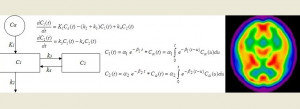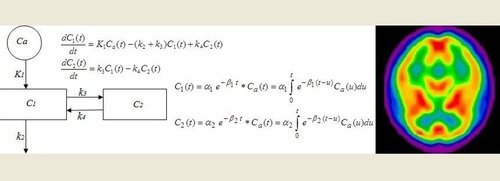Mathematical Modeling in Pharmacokinetics
Project coordinator: Eliete Biasotto Hauser, PhD
Members: Jaderson Costa da Costa, MD, PhD ; Gianina Teribele Venturin, PhD ; Samuel Greggio, PhD
The main objective of the project is to use compartment theory as mathematical modeling in the quantification of radiopharmaceutical capture, elimination and metabolization processes, based on data generated by µPET and PET technologies (microtomography and positron emission tomography). Building the input function is a necessary first step, since the radiotracer is administered intravenously. In order to apply the study in clinical research of several diseases, the work seeks to contribute to the generation of knowledge in pre-clinical research.
Check the publications about this research:
Parameter estimation for kinetic modeling of 18f-fdg in positron emission tomography (pet)



